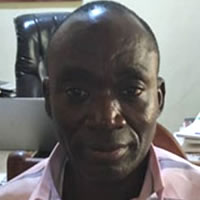Introduction
The overall development of society is based on the production of goods and services with human capital critical to the production process. The type of economic activity pursued is influenced by the nature of economy and the level of socio-economic development (Hull, 2009). Basically the larger the employed population, the more wealth is created leading to a better standard of living of the population.
This chapter discusses data on the economic activity status of the population, age and sex structure of the employed population, employment status and sector, and age and sex composition of the unemployed population in Pru District.
Economic Activity Status
Table 4.1 shows distribution of population aged 15 years and older by their activity status in the seven days preceding census night. The table shows that 71.7 percent are economically active and 28.3 percent economically not active. Out of the economically active population, the employed population constitutes 97.6 percent while the unemployed constitute 2.4 percent in the district. Population that worked seven days prior to the census night accounts for 97.3 percent, those who did not work but had a job to go back to, represent 2.4% whiles those who did voluntary work without pay constitutes 0.2 percent of the employed population.
The table further indicates that out of the population not economically active 64.5 percent are in full time education, 18.1 percent did just household chores and about 10 percent were too old or young to work.
Females who do not work but have a job to go back to constitute 2.7% compared with males 2.2% in the same category. The unemployed population shows obvious differentials by sex. The proportion of females who have worked before, were seeking work and available to work (44%) is higher than the similar proportion for males (32.6%). However, the proportion of first time job seekers is higher among males (67.4%) than females (56.0%).
The proportion of females who did home duties (26.4%) is nearly three times the proportion for males (9.4%), while the percentages of those who are too old or young to work for females (13.0%) is double the rate for males (6.5%). The proportion of males in full time education (76.6%) is higher than the proportion for females (52.8%).
Employed population
Table 4.2 shows the distribution of the employed population 15 years and older by age, sex and economic activity.
Out of a total population of 71,697 aged 15 years and older in the district, 70.0 percent are employed, 1.7 percent are unemployed while 28.3 percent are economically not active. The age group with the highest proportion of the employed population is 40-44 constituting 95.2 percent. The age group 20-24 are in the majority of those unemployed 3.6 percent and the least 0.2 percent is age 65 and older. Majority of persons who are economically not active in the district fall within the age group 15-19 which accounts for 67.6 percent. Among the sexes there are more males who are employed, 70.7 percent than females, and 69.4 percent. On the other hand, while 1.5 percent of males are unemployed, 1.9 percent of females are also unemployed. Unemployed females in the15-19 age group constituting 68.1 percent is in the majority of those economically not active compared with their male counterparts (67.3%).in the same age category.
Major Economic Activities
Agriculture comprising farming and fishing is the main economic activity in the district. Yeji, the District capital is recognized as the largest inland supplier of smoked/salted fish, cattle and other food crops in the district. The fish market serves as the main backbone of the Assembly’s revenue. The strategic location (just on the edge of the Volta Lake) makes it ideal for trade in general commodities which are basic to human survival.
Date Created : 11/17/2017 8:35:05 AM





 facebook
facebook X (twitter)
X (twitter) Youtube
Youtube +233 593 831 280
+233 593 831 280 0800 430 430
0800 430 430 GPS: GE-231-4383
GPS: GE-231-4383 info@ghanadistricts.com
info@ghanadistricts.com Box GP1044, Accra, Ghana
Box GP1044, Accra, Ghana